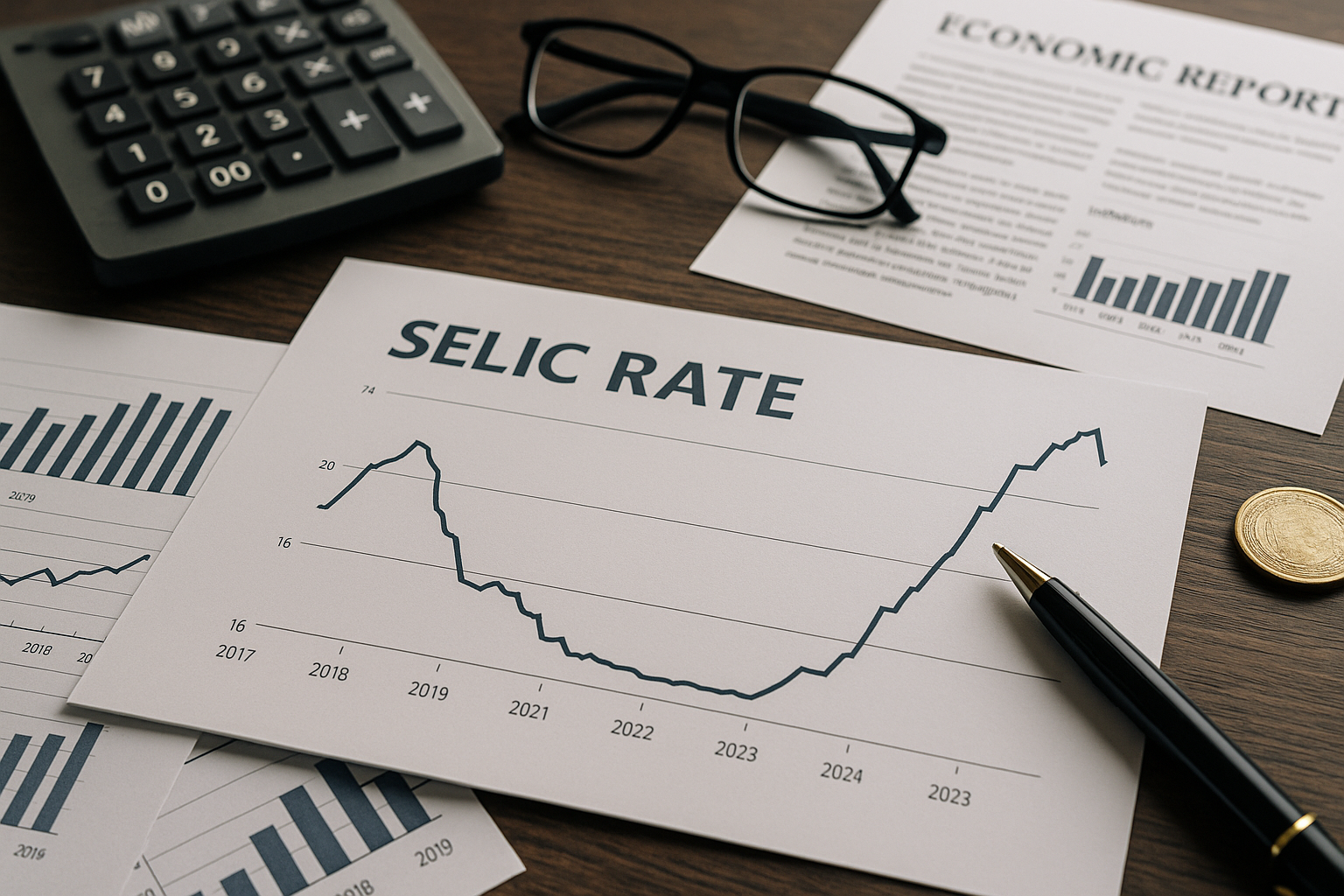The Selic rate is one of the most important indicators in the Brazilian economy. Short for “Sistema Especial de Liquidação e de Custódia”, the Selic rate is the basic interest rate set by the Central Bank of Brazil. But what exactly does that mean for the average person — and why does it matter so much for investors, savers, and consumers?
In this article, we’ll explore what the Selic rate is, how it’s defined, and why it has a powerful ripple effect across the entire economy.
What Is the Selic Rate?
The Selic rate is the interest rate used by the Brazilian Central Bank in transactions involving government bonds. More specifically, it’s the rate at which banks lend money to each other overnight using those bonds as collateral.
The Selic rate acts as a benchmark for all other interest rates in the country — from savings accounts to personal loans, mortgages, and investment yields.
In simpler terms:
📌 When the Selic goes up, credit gets more expensive and savings/investments often yield more.
📌 When the Selic goes down, credit gets cheaper, encouraging more spending and investment.
How the Selic Rate Is Set
Every 45 days, a group called COPOM (Monetary Policy Committee), part of the Brazilian Central Bank, meets to decide whether to:
- Raise the Selic rate
- Lower the Selic rate
- Keep it the same
This decision is based on economic data like:
- Inflation trends (measured by the IPCA)
- Economic growth or stagnation (GDP)
- Employment and wage data
- Currency stability (exchange rates)
- Global market conditions
The goal is to control inflation while maintaining economic growth.
Why the Selic Rate Matters to You
Even if you’re not a banker or investor, the Selic rate affects your daily life in many ways. Here’s how:
1. Loans and Credit Cards
Higher Selic = higher interest rates on:
- Personal loans
- Car financing
- Credit card balances
- Business loans
When borrowing becomes more expensive, people and businesses tend to reduce consumption, helping control inflation.
2. Real Estate and Mortgages
Mortgage interest rates are often tied to the Selic rate. A high Selic may discourage people from buying property due to higher financing costs. On the other hand, when Selic is low, mortgages become more accessible, boosting the real estate market.
3. Investments and Savings
When Selic rises, fixed-income investments often follow:
- Tesouro Selic (government bonds) becomes more attractive
- CDBs and LCIs/LCAs often offer better returns
- Savings accounts also gain slightly better yields (only if Selic is above 8.5%)
This encourages people to save more instead of spending.
4. Inflation Control
Controlling inflation is the main reason behind Selic adjustments.
- When prices are rising too fast, increasing the Selic slows down spending and cools the economy, helping to stabilize prices.
- When inflation is under control and growth is weak, the Central Bank may lower Selic to stimulate consumption and investment.
5. Currency and Foreign Investment
A higher Selic makes Brazil more attractive to foreign investors. Why?
Because they can earn higher returns on fixed-income assets here. This increases the demand for the Brazilian real (BRL), helping stabilize or even appreciate the currency.
Examples of Selic’s Impact Over the Years
Let’s consider real scenarios:
- In 2016, Brazil faced high inflation. The Selic was raised to over 14%, making loans expensive but helping stabilize the economy.
- By 2020, during the COVID-19 pandemic, the Selic hit a historical low of 2% to encourage economic recovery.
- In 2022-2023, facing renewed inflation, the Central Bank increased the Selic again, exceeding 13%.
These shifts had major consequences on housing markets, retail sales, employment, and the exchange rate.
Pros and Cons of a High Selic Rate
Pros:
✅ Controls inflation
✅ Attracts foreign investment
✅ Encourages saving
Cons:
❌ Reduces access to credit
❌ Slows business expansion
❌ May lead to job cuts
Pros and Cons of a Low Selic Rate
Pros:
✅ Stimulates economic growth
✅ Encourages borrowing and consumption
✅ Makes real estate more affordable
Cons:
❌ May overheat the economy
❌ Weakens the currency
❌ Reduces investment in fixed-income assets
What Happens When the Selic Changes?
When the Central Bank changes the Selic rate, other interest rates quickly follow. For example:
- Banks adjust their lending rates
- Investment funds rebalance portfolios
- The government recalculates interest on public debt
- Inflation forecasts are revised
- The media and market analysts react almost instantly
Even business decisions like pricing, hiring, or launching new products can be influenced by Selic expectations.
How to Prepare Financially for Selic Changes
Understanding Selic trends can help you make smarter decisions with your money:
- If the Selic is rising: prioritize paying off debts, and explore fixed-income investments
- If the Selic is falling: consider taking advantage of cheaper credit and investing in equities or real estate
It’s also wise to diversify your portfolio, keeping some assets tied to Selic and others with different risk profiles.
A Key Piece in the Economic Puzzle
The Selic rate is more than a technical number — it’s a key tool in shaping Brazil’s economy. From inflation control to investment strategy and household finances, understanding how Selic works helps you take control of your financial future.
Stay informed about COPOM decisions, keep an eye on macroeconomic indicators, and adapt your strategy accordingly. That’s the smart way to navigate the ups and downs of the economy.

